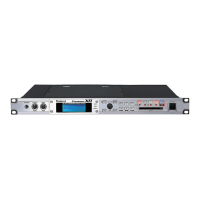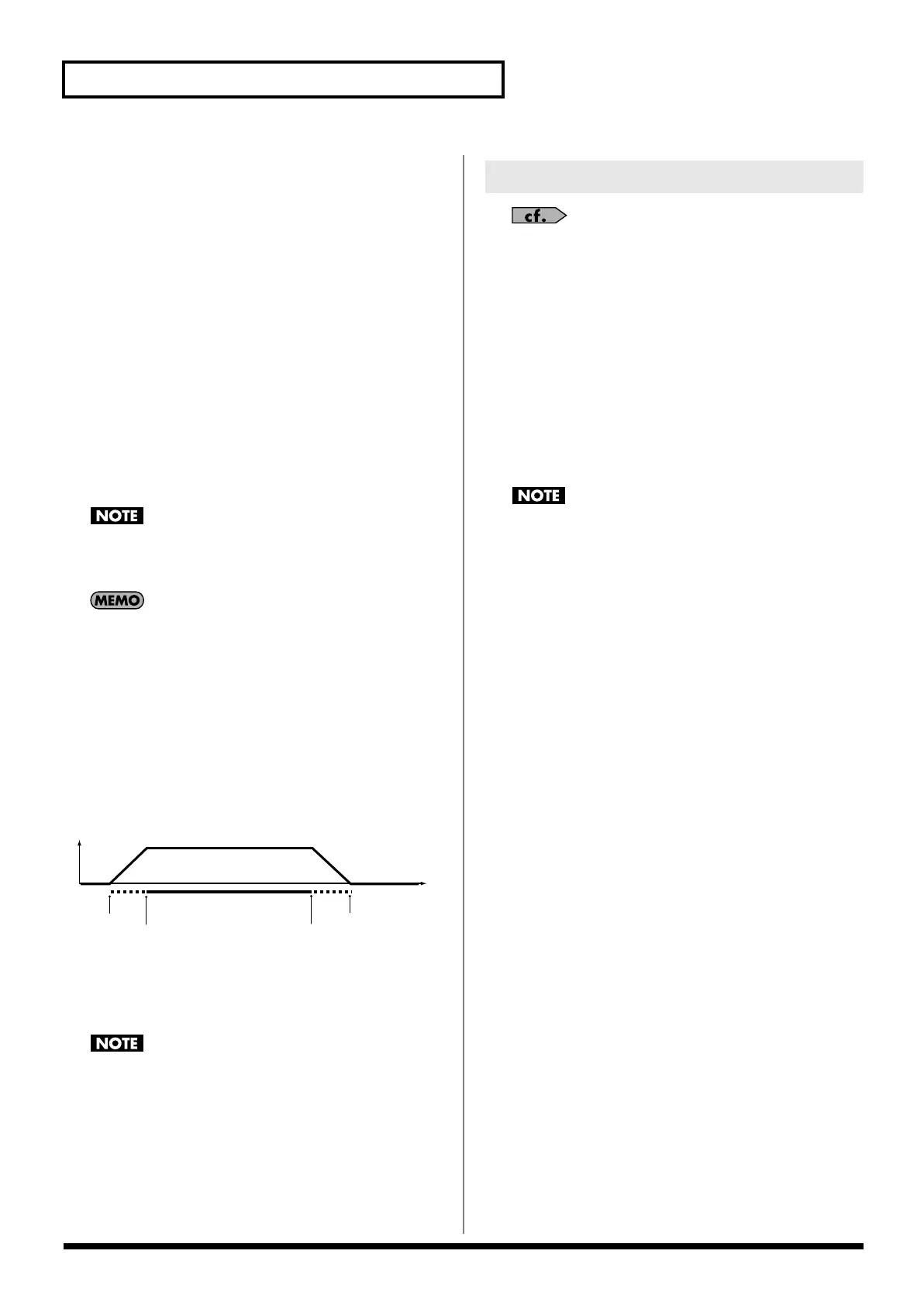54
Creating a Patch
Velo Fade Lower (Velocity Fade Width Lower)
This determines what will happen to the tone’s level when the tone
is played at a velocity lower than its specified velocity range. Higher
settings produce a more gradual change in volume. If you want
notes played outside the specified key velocity range to not be
sounded at all, set this to “0.”
Value:
0–127
Velo Range Lower (Velocity Range Lower)
This sets the lowest velocity at which the tone will sound. Make
these settings when you want different tones to sound in response to
notes played at different strengths.
Value:
1–UPPER
Velo Range Upper (Velocity Range Upper)
This sets the highest velocity at which the tone will sound. Make
these settings when you want different tones to sound in response to
notes played at different strengths.
Value:
LOWER–127
If you attempt to set the Lower velocity limit above the Upper,
or the Upper below the Lower, the other value will
automatically be adjusted to the same setting.
When using the Matrix Control to have different tones played,
set the lowest value (Lower) and highest value (Upper) of the
value of the MIDI message used.
Velo Fade Upper (Velocity Fade Width Upper)
This determines what will happen to the tone’s level when the tone
is played at a velocity greater than its specified velocity range.
Higher settings produce a more gradual change in volume. If you
want notes played outside the specified key velocity range to not be
sounded at all, set this to “0.”
Value:
0–127
fig.06-028.e
TMT Control Sw (TMT Control Switch)
Use the Matrix Control to enable (ON), or disable (OFF) sounding of
different tones.
Value:
OFF, ON
You can also cause different tones to sound in response to notes
played at different strengths (velocity) on the keyboard (p. 53).
However, the Matrix Control and the keyboard velocity cannot
be used simultaneously to make different tones to sound. When
you want to make the different tones to sound, set the Velocity
Control parameter (p. 53) to “OFF.”
For details on these settings, refer to
“How to Make Patch
Settings”
(p. 46).
Patch WG
Wave Group
Selects the group for the waveform that is to be the basis of the tone.
Value
INT:
Waveforms stored in internal memory
EXP:
Waveform stored in a Wave Expansion Board (SRX
series) installed in EXP slots.
SAMP:
Sample waveforms
MSAM:
Multisample waveforms
You cannot select a waveform group of a Wave Expansion
Board that is not installed.
Wave Bank
Selects the wave bank.
Value
When the wave group is INT:
A, B
When the wave group is EXP:
A–F
When the wave group is SAMP:
PRST, USER, CARD
When the wave group is MSAM:
USER, CARD
Wave No. L (Mono) (Wave Number L (Mono))
Wave No. R (Wave Number R)
Selects the basic waveform for a tone. Along with the Wave number,
the Wave name will appear at the lower part of the display.
When in monaural mode, only the left side (L) is specified. When in
stereo, the right side (R) is also specified.
* When using a multisample in stereo, you must specify the same
number for L and R.
Value:
—-, 1–1228 (The upper limit will depend on the wave
group.)
* When using a multisample in stereo, you must specify the same
number for L and R.
Wave Gain
Sets the gain (amplification) of the waveform. The value changes in 6
dB (decibel) steps—an increase of 6 dB doubles the waveform’s gain.
If you intend to use the Booster to distort the waveform’s sound, set
this parameter to its maximum value (p. 53).
Value:
-6, 0, +6, +12
Range Lower
Range Upper
Fade Lower
Fade Upper
Level
Velocity
Modifying Waveforms (WG)
Fantom-XR_r_e.book 54 ページ 2006年4月4日 火曜日 午前10時14分

